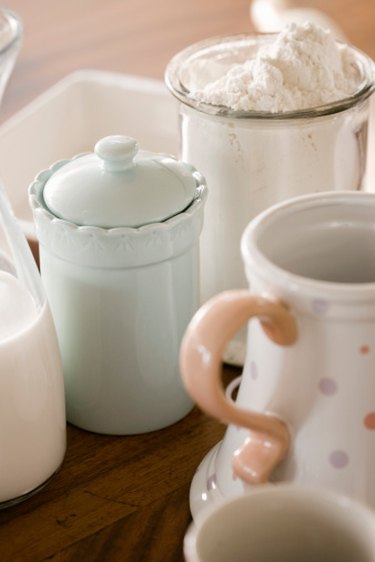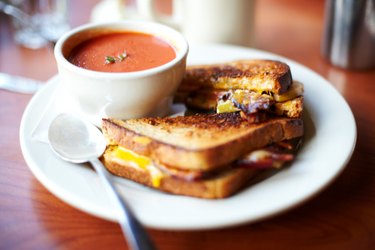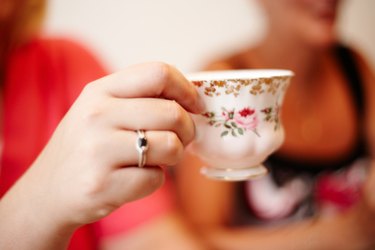
Stoneware, earthenware and porcelain are the names of different types of pottery. The clays used to make pottery are sometimes categorized by stoneware, earthenware and porcelain as well. Earthenware is the least expensive and least durable type of pottery made from a lower quality of clay. Stoneware is durable and more expensive than earthenware. Porcelain is the most durable and expensive and is made from the highest quality of clay.
Stoneware
Video of the Day

Stoneware is made from from unrefined clay. Stoneware clay has a grittier texture than porcelain clay due to its higher sand content. Stoneware is fired at a high temperature, 2185 degrees Fahrenheit, and the result is a piece of pottery that is strong and chip resistant. Stoneware if often used to make mugs and baking dishes and can be safely heated in ovens and microwaves. Stoneware is a popular choice for dinnerware because it's durable and less expensive than porcelain.
Video of the Day
Earthenware

Earthenware is fired at 1915 degrees Fahrenheit, much lower than stoneware. The result is porous pottery that is not as strong as stoneware or porcelain pottery pieces. Earthenware can be strengthened by glazing. Glazing hardens the surface of the pottery, making it non-porous and allowing earthenware pieces to be used for cooking. Earthenware is most commonly used to make pots and holders for plants. Terracotta is a type of earthenware pottery.
Porcelain

Porcelain is made from the finest quality of white clay. It is fired at 2300 degrees Fahrenheit, resulting in hard, strong and translucent pieces of pottery. Porcelain is typically white and has a very smooth surface. Porcelain is the safest pottery to use in the kitchen because it is non-stick, non-porous and dishwasher safe. High-end dinnerware is commonly made of porcelain. It is the most expensive kind of pottery.
Identifying Finished Pottery

When looking at a finished piece of pottery, there is a simple way to tell the difference between stoneware, earthenware, and porcelain. Texture is the easiest way to distinguish between pottery types. Stoneware will have a gritty, sandy texture. Earthenware will feel chalky and the bottom of the piece will be glazed and appear shiny. Porcelain will be smooth and white. Porcelain will also be thinner and might seem to get translucent toward the edges.